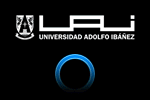The delimitation of burned areas is an important step for the study of forest fires, and the use of satellite remote sensing allows a scalable methodology. Previous studies use a dNBR threshold to determine the presence of burned areas, but this threshold is affected by vegetation variability determined by the geography of the study area and land use coverage. For them, the difference in the normalized index of burned areas (dNBR) was used to study the mega fires that affected the central zone of Chile in the summer of 2017. An automated methodology was developed that, based on satellite images and polygons of the burned areas provided by the National Forestry Corporation of Chile (CONAF) generates a set of dNBR thresholds differentiated by administrative region and land use. The application of differentiated dNBR thresholds significantly improves the accuracy of the burnt area delimitation model, although it does not achieve satisfactory results for all land uses. This methodological advance will make it possible to improve the design and control of policies for the prevention, conservation and restoration of ecosystems affected by forest fires.


